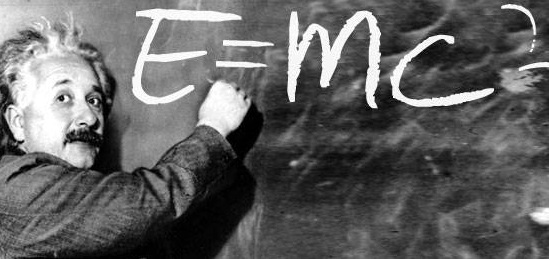理論物理学が(我々に)与えなければならない情報がいかに極めて抽象的なものであるかは(how exceedingly abstract)、必ずしも十分に理解されていない。理論物理学は,事象(出来事)の論理的構造をとり扱うことを可能にする一定の(いくつかの)基本的な方程式をたてる(lay down 定める)が、他方,その論理的構造を有する多くの事象(出来事)の固有の性格(instrinsic character 本質的な性格)が何であるかは全く未知のままにする(remain 残す)(注:”events” に野田氏は「出来事」という訳語を与えているが、”events” と “occurences” という単語が同時に出てくることがあり、その場合は、前者を「事象」、後者を「出来事」と訳語を変えないと、何を言っているかよくわからなくなる)。我々(各個人)が事象(出来事)の固有の性格を知るのは、その事象(出来事)が我々(=自分/それぞれ)の身に(直接)起こる(生じる)場合だけである。理論物理学の示すいかなるものによっても,(自分以外の)他の場所で起る事象(出来事)の本質的な性格については,我々は何も言うことができない。そういう事象(出来事)は、我々(各自)の身に起る事象(出来事)と全く同様のものであるかもしれないし、あるいは、厳密にはまったく想像不可能な面(点)でまったく異なっているかもしれない。物理学が我々に与えるのは、事象(出来事)の変化についての抽象的特性を示す一定の方程式のみである。しかし,その変化するものが何であるか、それは何から変化し、何に変化するか(何から何に変化するか)については物理学は沈黙する(例:物質は素粒子からできているのはわかっても、その素粒子とは何かはわからない。わかるのは構造だけ)。 次の段階は知覚への(ひとつの)接近(an approximation to perception)であるが,物理学の領域にとどまりながら知覚への接近を試みる(注:人間などの生命体における「知覚」を最初から扱うのではなく、まず物質的なもの機械的なものの「知覚」に似た現象から検討してみようということ。ラッセルは「写真乾板」の例をとりあげる/写真乾板がわからない人は google でググッテみてください)。写真乾板を夜の空の一部に向けて露出すると(exposed to 晒す)、散らばった星(separate stars)の写真がとれる。何枚かの写真乾板が似たものであり、大気の状態も似ていれば、空の同じ部分の何枚かの違った写真は、とてもよく似ているであろう。それゆえ,多数の星から多数の写真乾板に進む(向かう)何らかの影響(私は,ここで,私が考えつく最も漠然とした言葉を使っている)が存在するに違いない。物理学者は以前はこの影響が波動から成ると考えていたが,現在では光子(フォトン)(注:量子論では光子は「ボース粒子」と呼ばれる分類の量子)と呼ばれる小さなエネルギーの束から成っていると考えている。物理学者は光子がどれだけの速度で進むか、また,どういうふうにして,時々,直線の経路(a rectilinear path)からそれるかを知っている(注:光は重力の影響を受けてまがる。いや、正しくは、光はまっすぐに進むが、空間(正しくは時空)が曲がっているために,曲がるように見える)。光子が乾板に当ると、光子の一つ一つが(物質とは)異なった種類の,エネルギーへと変換する(注:E = mc2 :エネルギー量=質量×光の速度の2乗)。各々の別々の星は別々に写真に写り、また、晴れた夜に途中に視界をさえぎるものがない場所ならどこでも星の写真がとれるのだから、その写真がとれる(印画されうる)写真乾板上の各々の場所において当の星と特別な関係をもつ何らかのことが起っているに違いない。従って、夜の大気はあらゆる場所において、そこで写真に写すことができる星々と同数の大きの別々の事象(出来事)を含んでいることになり、また,これらの別々の事象(出来事)の一つ一つは、その事象(出来事)の源である星々とその事象(出来事)とを結びつける(ところの)一定の個別の歴史(経歴)を持っているに違いない。これら全てのことは,同じ夜空に向けられた(露出された/晒された)多くの異なった写真乾板を考えることから帰結する(出てくるのである)。(訳注:写真乾板でなくても,多数の人間が同じ方向の夜空を見つめている時には、同じような現象がそれぞれの目の網膜に起こっている)
Chapter 2: My present view of the world, n.3 It is not always realized how exceedingly abstract is the information that theoretical physics has to give. It lays down certain fundamental equations which enable it to deal with the logical structure of events, while leaving it completely unknown what is the intrinsic character of the events that have the structure. We only know the intrinsic character of events when they happen to us. Nothing whatever in theoretical physics enables us to say anything about the intrinsic character of events elsewhere. They may be just like the events that happen to us, or they may be totally different in strictly unimaginable ways. All that physics gives us is certain equations giving abstract properties of their changes. But as to what it is that changes, and what it changes from and to – as to this, physics is silent. The next step is an approximation to perception, but without passing beyond the realm of physics. A photographic plate exposed to a portion of the night sky takes photographs of separate stars. Given similar photographic plates and atmospheric conditions, different photographs of the same portion of the sky will be closely similar. There must, therefore, be some influence (I am using the vaguest word that I can think of) proceeding from the various stars to the various photographic plates. Physicists used to think that this influence consisted of waves, but now they think that it consists of little bundles of energy called photons. They know how fast a photon travels and in what manner it will, on occasion, deviate from a rectilinear path. When it hits a photographic plate, it is transformed into energy of a different kind. Since each separate star gets itself photographed, and since it can be photographed anywhere on a clear night where there is an unimpeded view of the sky, there must be something happening, at each place where it can be photographed, that is specially connected with it. It follows that the atmosphere at night contains everywhere as many separable events as there are stars that can be photographed there, and each of these separable events must have some kind of individual history connecting it with the star from which it has come. All this follows from the consideration of different photographic plates exposed to the same night sky.
Source: My Philosophical Development, chap. 2,1959.
More info.:https://russell-j.com/beginner/BR_MPD_02-030.HTM

